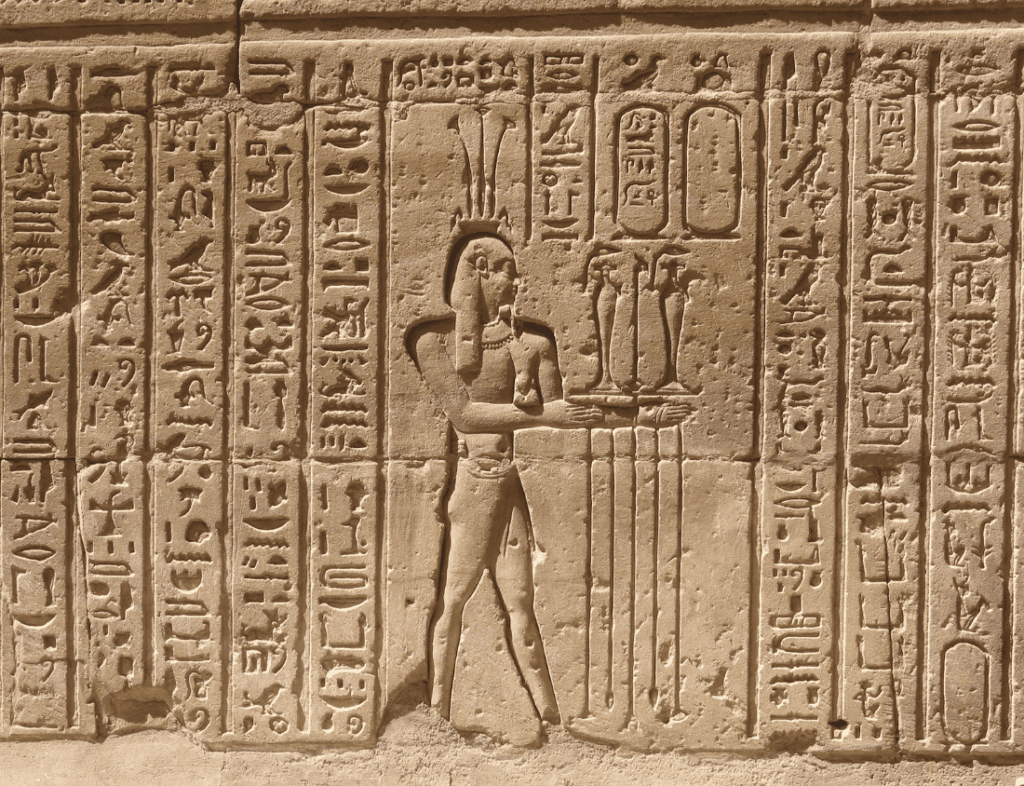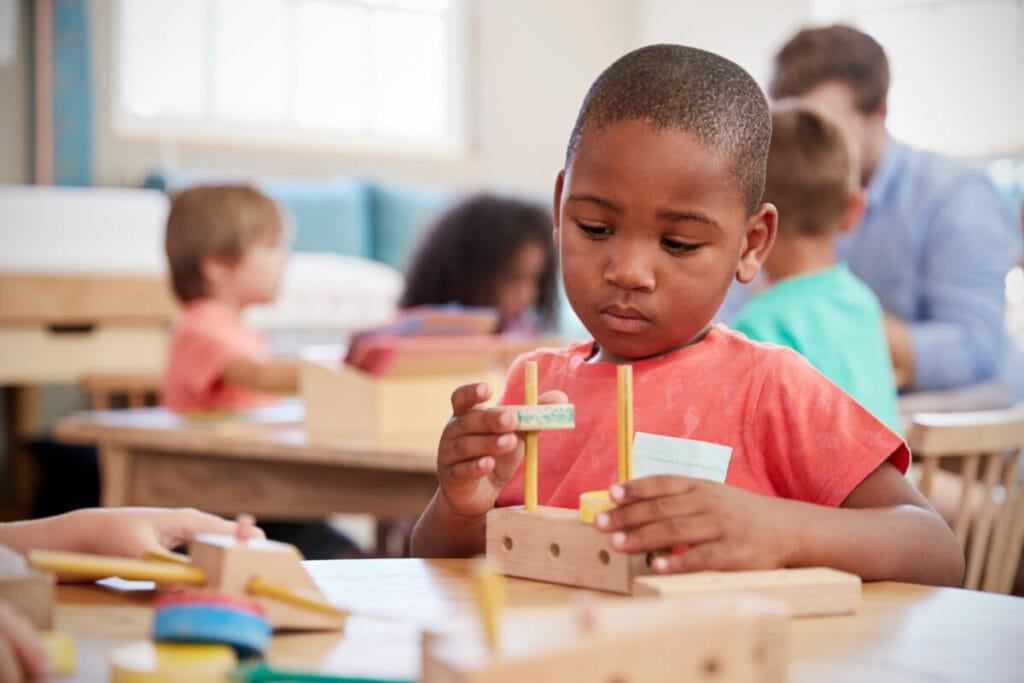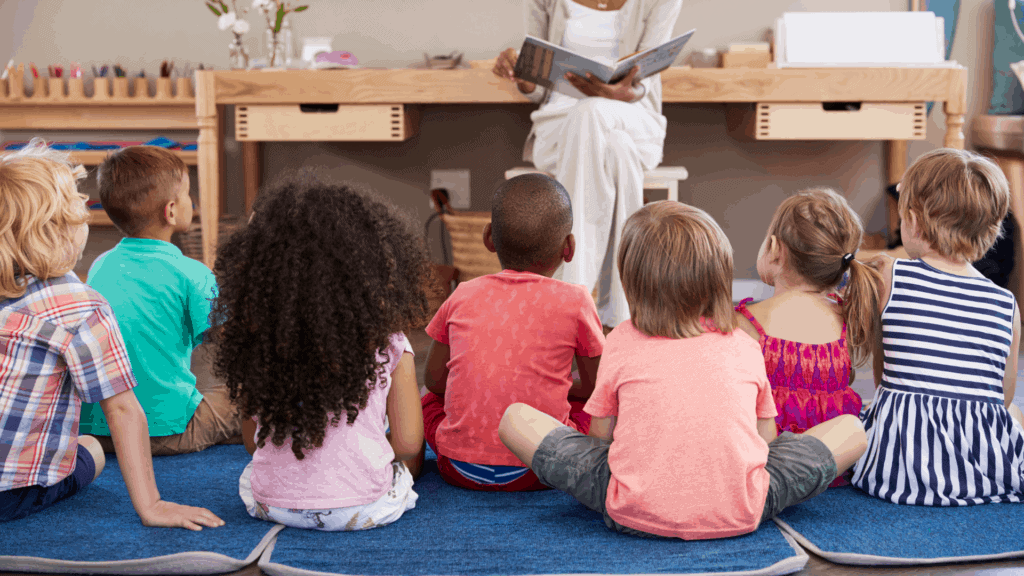The
And while “The Five Great Lessons” can have an almost zealous referential tone to it, once you understand them, I’m sure you will agree that the five lessons really are pretty great. One of the best ways to get started on your path to understanding Maria

Some Introductory Principles
The
They are all described and introduced as epic characters, not unlike one would find in early mythologies and creation stories. Through vivid use of metaphor, students clearly see and understand the operating principles and essences of the ideas. This is in keeping with the
Being able to easily and intuitively grasp the lesson and the concept is primary, at this point. Later, as the student matures, they will develop the skills to engage in a more detailed, analytical, and mathematical understanding of the concepts. In this way, the lessons lay a foundation for success later on in more advanced disciplines, such as chemistry or microbiology. The first thing is to make sure the child is interested and engaged!
The first three lessons focus on ideas we might call “hard science”, while the last two focus on ideas we might place in the field of “philosophy” or “humanities”. Let’s take a deeper look at them, now!
The First Great Lesson: “The Coming of The Universe and Earth”.
The first
If it is accessible to the imagination, then the essence of the idea will be graspable to a very young mind, without the need for complicated mathematics explanations or equations. This means describing the Big Bang in an abstract, yet personal way. The light might “need to get out into the open”. The heat might “follow along, to see where it goes”. The style of narration is not unlike what one would expect from Greek and Egyptian mythology, Japanese Shinto tales, Native American creation stories, or ancient Hindu theology.
The lesson goes on to explain how the galaxies, stars, and planets all formed across the vast universe, from its elemental beginnings. This continues by using deep, mythical metaphors to spark the child’s interest and curiosity, all while adhering to an accurate picture of the relevant, current scientific models. The water and the air may, for example, be “friends who end up in a conflict because neither got along with the ground, which was always too hot”. Many other examples of this kind of metaphorical story are available on Youtube or anywhere else you see official

Finally, this lesson goes on to explain the terra-forming of our own planet. This mainly consists of describing the conditions that allowed for the forming of the amino acids and biological matter that make up the building blocks of what will be explained in the next great lesson.
This lesson, in particular, is presented with a sense of awe and cosmic wonder that helps address a child’s spiritual growth and stimulates their curiosity and love of learning. It also forms a strong philosophical foundation and introduction to the four great lessons to come. Hopefully, by now you can see why the
The Second Great Lesson: “The Coming of Life”.
The second
The crucial aspects of water and its role in creating the chemical environment that allows life to form are the next emphases. Air and water’s relationship on the newly formed earth might be described as two characters who interact to spread their influence.
This is a way to describe thermodynamics and its relationship to chemistry and biology in a way that is interesting, fun, and focuses on the essential, holistic aspects of the events. For a young child, this approach is more helpful and effective than focusing on details that don’t necessarily give them the big picture of what’s happening. In this way, it allows for the understanding of complicated scientific theories, beyond what one might ordinarily expect from a young child.
This readily transitions into the explanation of amino acids, basic biological structures, and ultimately, single-cellular life. This might not necessarily be explained in great detail, or in terms of technical jargon, but perhaps as “squishy jellies”, “early pollution in the sea” or “bits and pieces that came together”.
Next, we learn about the evolution of multi-cellular organisms, and plants and how shelled creatures eventually become vertebrates. Eventually, we are told the story of amphibians, reptiles, and birds. Finally, we learn the basics of human evolution. This is where the third great lesson begins.
The Third Great Lesson: The Coming of Humans
Once we have emphasized the importance of the precious flora and fauna for laying the groundwork, we now explain how they allow humanity to appear. During the
We begin with the basics of primate evolution, as far back as current science knows. This was, roughly between 10 million-4.5 million years ago. It is important to emphasize phrases, such as, “Even five million years is very young, compared to the old, ancient rocks!”.
First, our bipedal ancestors appear, from their early primate ancestors. Then changing environments and landscapes bring on plains, savannahs, and forest-edge environments that are suited to these various groups. These different environments create diversity among the skills and lifestyles of these newer primates. This is what we know as the Lower Paleolithic Era or Early Stone Age.
Next on the scene, we find Homo Erectus. This new group marks a huge advancement, particularly in tool usage. We learn that the Ice Age wiped out our familiar friends from pre-history only to find that human evolution picks up again, this time in Africa, where the newly evolving people spread to the middle east and further into Asia. Volcanic activity, unfortunately, erased many of the newly evolving peoples. Homo Sapiens, however, survive. Once again, all this occurs “in the blink of an eye” in the wider course of the planet’s pre-historical timeline.
[You might have noted that the information in this lesson gets somewhat more specific and detail-oriented than in previous lessons. At this point, you can see the general pattern of ‘evolution’ inheres at both the micro and meta-levels of the method. The pattern of development you find in the universe is isomorphic to the pattern of development in human children, which also maps perfectly onto the curriculum. The pattern is much like a Russian nesting doll, or the mirroring images of the DNA helix. This structure provides consistency and familiarity without enforcing rigidity. It helps children retain information without ‘forcing’ them to do so.]
At this point, the lesson asks us, “What makes these new primates (i.e .we humans…) “special” or essentially different than the other animals?” Someone may be inclined to mention hands or sophisticated, opposable thumbs, but these are a minor part of the deeper explanation, at best. What makes homo sapiens and our friends and neighbors special is their minds.
The mind is synonymous with consciousness. It means “there is something that it’s like to be you that only you knows…. from the inside”. It goes beyond intelligence. Your smartphone might be “smart”, but it isn’t conscious. This is only found in animals, mostly vertebrates, and only animals with complicated nervous systems. And only humans can reflect their own consciousness back on themselves, infinitely, like a mirror facing another mirror. Only humans can think about the thoughts that they think about. Think about that… Now you’re really in a loop! That’s what it means to be not just conscious, but self-conscious.
To quote a popular super-hero, “With great power comes great responsibility”. That’s why our minds are made up of empathy, compassion, kindness, and ultimately, love, as well as facts and information and strange loops. We need more than that. And not just instincts and critical thinking. Humans need much more. So we have these special abilities, which we use when we engage in morality and ethics.
This is how the
A good place to end this lesson is by noting the benefits of diversity. When different people have different abilities and ideas, be it due to their environment, circumstances, or their inner consciousness, we can all come together to share our skills and ideas. This is the essence of “learning”.
The Fourth Great Lesson: The Story of Writing
Now that we have introduced the origin of the human mind, at this point in the story, it is only natural that the mind wants to share its ideas. In other words, we want to communicate. The
Communication always begins with an utterance. An utterance can be any noise that a primate makes with its mouth. It could be a sigh, a whimper, or a laugh. An utterance that has a consistent, intended meaning eventually becomes a word.
Consider a baby’s first cry. Consider the first Homosapien to always point at the same object and grunt the same grunt. In every case, the first attempts to communicate come through sound. But in the latter case, we have intention and meaning. This is the first formation of natural language*. (As opposed to the notion of ‘private language’ which is a more complex, however relevant issue- see Noam Chomsky, Jerry Fodor for an in-depth analysis of language acquisition in early human development).
Eventually, humans find that they need to do more than just communicate in the here, and the now, wherever they may be. They want to communicate things to people who may not be here at the moment, perhaps someone who may come along later. Or perhaps they want to communicate with someone who is far away. Perhaps they want to communicate to a future descendent. In short, humans want to “leave messages”.
To do this, we must invent “signs”. Not just signs in the ordinary sense. After all, what would we write on them if we hadn’t invented words yet? Words and letters are, fundamentally, signs themselves, in the proper, linguistic sense. Thus, we invented systems of symbols. The Phoenicians invented cuneiform (where we get our word ‘phonetic’) and the Egyptians invented the first uniformly translatable system of hieroglyphs.
The ancient Greeks began to use the symbols created by the Egyptians without regard to their pictorial imagery. In this way, they were using them as token symbols, which is the building block of any complex natural language. Romans simplified this Greek system to be easier to write and remember, which lead to the letters we use in most western languages today. This use of ‘token symbols’ as a system of simplifying and understanding larger ideas was then incorporated into counting, which leads us to our next lesson.
The Fifth Great Lesson: The Story of Numbers
The
At first, this could be easily done by tying knots in a rope or making marks on a stick. Early humans may have kept track of certain larger amounts by representing objects with pebbles or shells. But soon bartering and commerce occur, and humans begin to build bigger and more complex things. There becomes a greater need to keep track of larger amounts. The system of using one smaller token object to represent a larger, more important object becomes impractical.
Given this, it should be no surprise that Sumerians, who are the earliest example we have of a sophisticated civilization, were the first ones who we know for sure wrote down a shorthand for this, which we now call, ‘numbers’! They were almost certainly the first to symbolize larger numbers that could not have otherwise been kept track of easily.
Egyptians followed suit, using their pictorial hieroglyphs. In China, they did much the same thing. These systems can be compared to the Hebrew numeric system, in which the same symbols have both a numeric and literal meaning. Often the deeper meaning behind the number itself is tied to the word it represents. For example the number ‘one’ may represent ‘father’, the number ‘two’ may represent ‘mother’ and the number ‘three’ may represent ‘family’, being comprised visually of aspects of the first two.

Eventually, we get Roman numerals, the counterpart to our current letter system. Today, however, we use Arabic Numbers, which came to Europe via the interest in advances made by Arab mathematicians. This allowed us to use zeroes and decimals to make basic arithmetic calculations easier.
The story of numbers should form a foundation in mathematical theory that shows children, at an early age, that mathematics is not just the repetitive, dry, analytical process of solving problems for the sake of solving problems. It demonstrates a somewhat Pythagorean sympathy in that numbers and mathematics are every bit as much about music, infinity, probability, proportion, dimension, and art as they are about chemistry or physics. By the same token chemistry and physics have a lot to do with creativity and intuition!
Note: It is important to keep in mind that when teaching via creative story-telling, you must make sure that the analogy being used is apt or that the metaphor is accurate. These stories are much more than just interesting stories. The stories must ring true, even if they are not presented literally, as they might be to a more mature, advanced learner. If one keeps this in mind, the narrative style of teaching should serve the teacher and the student well.
What Can We Take Away From These Lessons?
Ultimately the
These techniques help actualize the
Another one of the many great things about these lessons is that they serve many a greater purpose beyond helping children retain important scientific information. Whether one is a Christian, Muslim, Jew, Hindu, atheist, agnostic, or of any compassionate system or perspective under the sun… if you have this solid educational background, it is not unlikely that you may find it useful in your adult, and spiritual life, as well.
The idea of purpose, meaning, and the interconnectedness of all things is a thread that runs through these five lessons. The lessons also promote a life-long engagement in critical thinking. For example, did you notice that the end of each lesson is the same as the beginning of the next lesson? What does that pattern remind you of? (Hint: It comes in ‘eights’ instead of ‘fives’!)
As I said earlier, if you are new to the Montessori method, and all this sounds “overreaching”, “dramatic” or perhaps even “overly ambitious”, that’s perfectly understandable. But don’t worry. Once you engage in the great lessons, you will find they are very easy to understand and make perfect sense. They all form a sound foundation from which to proceed with an effective and benevolent education method.
The lessons are designed in a somewhat “spectacular” way, but this should not lead anyone to take them any less seriously. This is meant to appeal to the sense of wonder and imagination that we all have as children. Hopefully, we don’t lose that as adults! I hope this gives you a clearer picture of the







